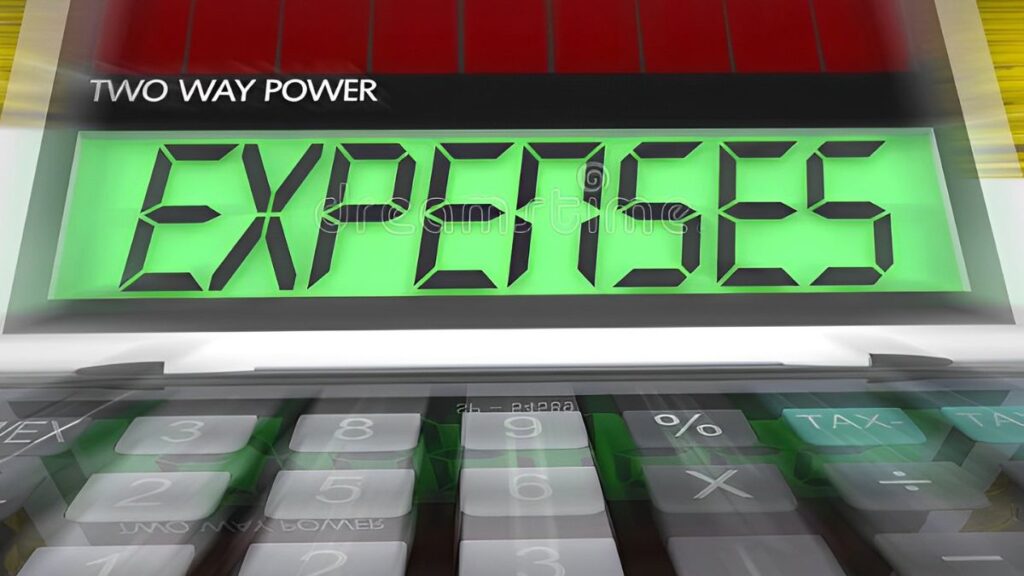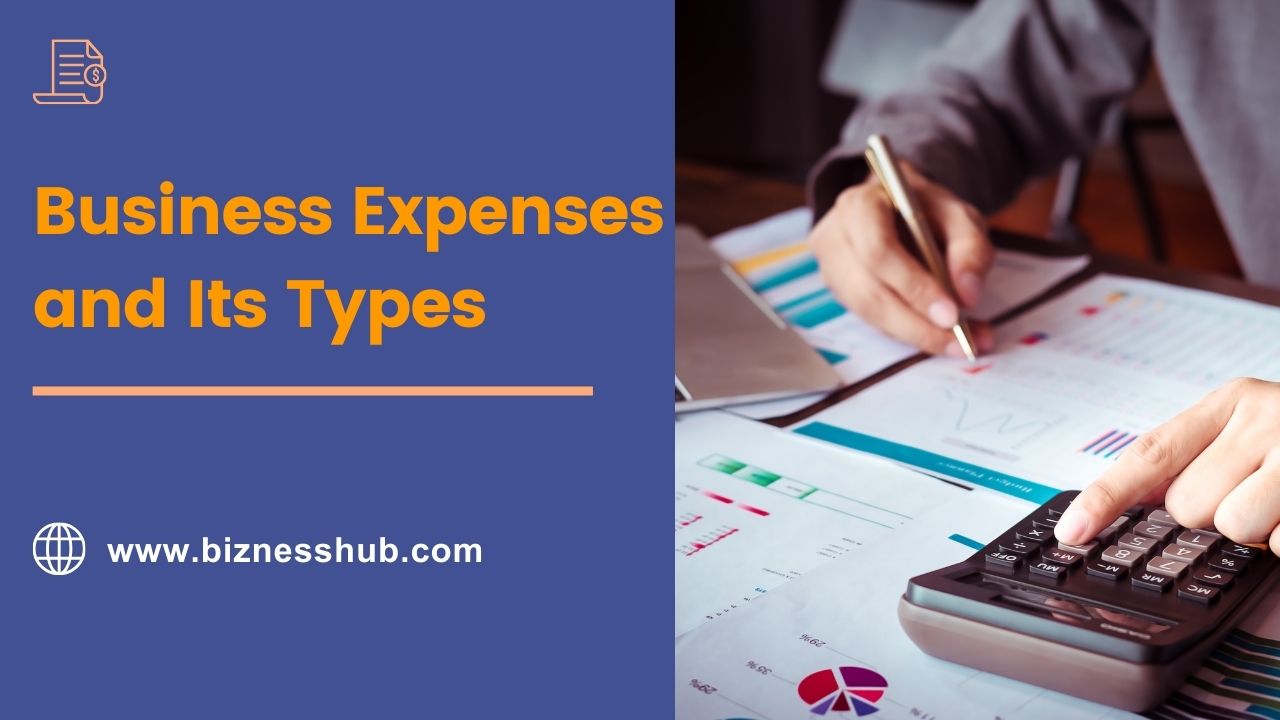Costs are incurred to successfully run, manage, and sustain a business. Travel and transportation costs, salary, rent, entertainment, phone, and internet costs, etc., are a few examples of company expenditures. The sole prerequisite is that money must be spent on business-related expenses; no personal expenses are covered.
Business expenses incurred by an organization are ordinary and necessary costs associated with its operations.
Business expenditures need to be tracked and categorized because some expenses can be deducted as tax deductions, resulting in significant savings.
A business must incur expenses to operate. Various charges must be incurred to run any firm successfully and profitably. Many expenses have a recurrent nature.
What are Business Expenses?

Expenses incurred in the ordinary course of business are called business expenses. Small businesses and large corporations can benefit from them. In the income statement, business overheads are included. A company’s taxable net income is calculated by subtracting business costs from revenue on its income statement.
Payroll and rent make up a considerable portion of ongoing costs. Some costs, such as annual subscriptions, annual membership dues, and depreciation, may only be paid once a year. It is only necessary to operate a business since none of them can function without spending money. Different types of business costs are required for any firm to operate.
Expenses incurred for a business cannot be deducted as personal expenses. Expenses incurred for business and personal reasons are the only exceptions. The business part can be deducted in that case.
Some Common Examples of Business Expenses
These are some common business expense examples that can be deducted sometimes.
- Equipment or Equipment rental
- Software
- Subscriptions
- Equipment rentals
- Advertising
- Maintenance and repair
If you run a small business and the location is from your home, you may benefit as these expenses are cut off from your list.
- Home office space (as long as this is your main place of business)
- Security system
- Property taxes
- Maintenance, repairs, or upkeep
Some Examples of Costs for the Business
Following are a few instances that are fairly typical in the business sector:
Rent Overheads for the Space Occupied by Business
Rent is a fee for enterprises who hire commercial space and conduct business there must pay. It is one of the higher fixed expenses with an enormous value besides salaries.
Traveling and Conveyance Cost of Business
Another typical cost of business that may be noted in any profit and loss report is travel and transportation. It is the expense related to moving workers, directors, or anybody else from the office location to the location where the event has to take place for company meetings, growth, and communication. Travelling might be considered out-of-station events, whereas conveyance is local travel to a meeting or customer.
Depreciation Overheads of Business
Depreciation is the typical method used to expense corporate assets. On the income statement, depreciation is a tax-deductible item categorized as an indirect expense. Depreciation charges can be written off over several years, including the price of vehicles, computers, furniture, real estate, and other items.
Refreshment Expenditure of Company

The IRS puts various limits on several expenses, especially those related to gifts, meals, and entertainment. Generally speaking, you may only deduct 50% of the payment of feeding staff, while some meals may be totally deductible.
Salaries Cost of Business
Personnel salaries are the most frequent and significant expenditures in every company’s profit and loss statement. It is the sum paid to employees each month in exchange for their services to the company.
Communication Expenses Incurred by Businesses
Today, no company can function without a means of communication, and the most expensive part of operating any company is paying for phone and internet service. Every company’s profit and loss statement is another fundamental and typical expense. Every firm has to develop, grow, connect with its clients and suppliers, and keep an eye on the regulations of its rivals if it wants to gain income. Only when the company has effective communication channels are these things achievable.
Printing and Stationery Expenses of Business
For the notebooks, registers, A4 sheets of paper, pencils, calculators, and other essential things required in the business’s daily operations, printing and stationery are recurring expenses the company spends.
Other Business Expenses
- Marketing and advertising costs
- Processing costs for credit cards
- Employee training and education costs
- specific legal costs
- costs for licenses and regulations
- wages to contract workers
- plans for employee benefits
- Equipment leasing
- Costs of insurance
- Paying interest
- Office supplies and costs
- Costs of upkeep and repairs
- Office rental Fees for utilities
How are Business Expenses Calculated?

The solution to the earlier query is simple. The person incurring such charges was required to furnish invoices or bills for the business expenses. The relevant management must authorize these bills/invoices after being validated by the appropriate individual in the accounting department. If the costs are paid from these financial sources, they may also be traced through the business’s bank statements or the credit card account of the firm.
Any cost paid electronically, like a credit card, debit card, net banking, or internet banking, may be easily traced. This is because each payment has a transaction id and reference id attached, which may be used to determine if the payment is a business cost or not.
| TAX DEDUCTIBLE EXPENSES | NON-TAX DEDUCTIBLE EXPENSES |
| Payroll costs | Legal fees |
| Insurance costs | Government fines |
| Rent | Demolition expenses |
| Mortgage payments | Political contributions |
| Interest expense | Educational costs |
The Bottom Line
If your company is just getting off the ground or you want to expand soon, you must keep thorough and open records of all of your outlays. It will not only assist you in lowering your taxable income but also in managing your company.
You may analyze your company’s spending when cash flow is a problem and identify areas for cost-cutting. On the other hand, if your company is performing well, you may look at potential growth areas to invest in.
You can show lenders that your company is financially prudent and a reliable borrower by keeping track of your business expenses.
By allowing you to categorize individual line items by expenditure category, good accounting software may help you further differentiate between deductible and unreimbursed expenses. Personal expenditures, entertainment expenses, food expenses, travel expenses, capital expenses, and more are all included under this heading. This not only helps with reporting at the end of the tax year, but it also enables you to review your business spending in detail and identify potential areas for cost reductions.
For more insights and ideas related to businesses, marketing, social media, financial awareness, business essentials and technology check out BiznessHub, to explore further opportunities and knowledge.
FAQs
Ques. What is a business expense?
Ans. This is the cost of running a business or organization. All the expenses are covered in business expenses.
Ques. What are some of the common business expenses?
Ans. There are several common business expenses like electricity cost, advertising, traveling costs, food costs, and many more.
Ques. Is managing business expenses easy?
Ans. Yes, managing business expenses is not tricky or hard. You just have to maintain a record of it.




